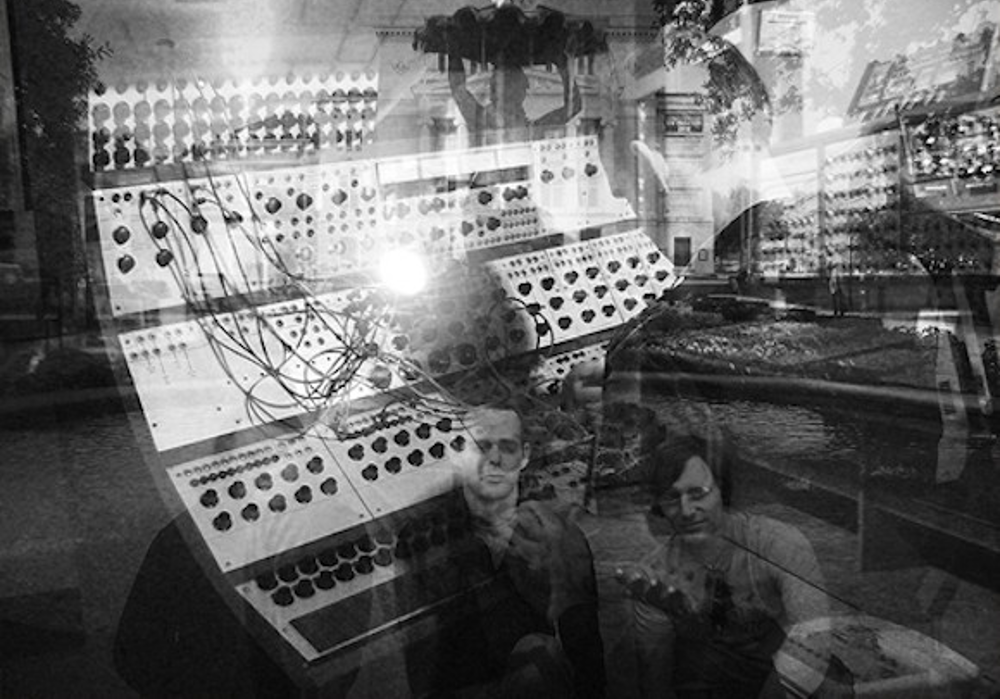
In the 2000s, a number of artists on the noise scene gradually swapped ear-scouring feedback for more dulcet synths and arpeggios rooted in the Berlin school of the 1970s. Chief among them were Emeralds, whose dozens of cassette and CDR releases, and subsequent spin-off projects such as Steve Hauschildt, Mark McGuire Imaginary Softwoods, Outer Space, Mist, et al (not to mention scores of releases put out by John Elliotts Spectrum Spools label), generated a prolific cottage industry in psychedelic burble and shimmer. At the same time, Oneohtrix Point Never and other artists tagged as "vaporwave" were channeling yesterdays VHS fantasies into a retro-futurist uncanny valley, where Windows 95 startup chimes served as doorways to new dimensions of perception.

New age, long derided as so much crystals-and-incense mumbo-jumbo, has seen its reputation improve in recent years. Partly, thats thanks to compilations like Light in the Attics I Am the Center: Private Issue New Age Music in America 1950-1990 and Soul Jazzs Space, Energy & Light: Experimental Electronic and Acoustic Soundscapes 1961-88. Both served to remind listeners that some new age was pretty awesome, even if it did have titles like "Dolphin Dream" or "The Third Eye of Atlantis." Theres considerable overlap between the new age movement and the early years of ambient music. The pioneering synthesizer musician Suzanne Ciani dipped into new age on albums like 1982s Seven Waves. Ambient and new Age pioneer Laraaji ended up recording for Brian Enos Ambient series after Eno heard him playing new age music in Washington Square Park. And today, pioneering new age work is being folded back into the electronic music canon: Consider the case of Pauline Anna Strom, whose ethereal, drifting synthesizer music-recorded at home in the 1980s-was recently reissued by New York experimental powerhouse RVNG Intl.

Contemporary ambient music begins with Brian Eno, who laid claim to the term with 1978s Ambient 1: Music for Airports. But the idea stretches back a century, to Erik Saties idea of "furniture music." And its roots sink deep into electronic musics mid-century origins, as the advent of oscillators and then synthesizers allowed artists to sculpt sound in ways never before imagined. You can hear ambients early stirrings in Daphne Orams exploratory work for the BBC Radiophonic Workshop, in which squealing circuits trace the limits of comprehension; you can hear the sound taking shape in the hypnotic repetitions of Steve Reichs earliest experiments with tape. Groundbreaking synth studies from Suzanne Ciani, Beatriz Ferreyra, and Laurie Spiegel expand upon the otherworldly atmospheres that will become so central to the form. And at the intersection of new music, disco, and post-punk DIY, Arthur Russells World of Echo imagined yet another form of proto-ambient music by turning pop songs diffuse as clouds.

Chalk it up to high techs growing pains. In the late 1990s, media werent quite as frictionless as they feel today. CDs skipped; dial-up modems gurgled; and hard drives hiccupped as they whirred. Out of this jittery din came artists like Oval, who scribbled in Sharpie on his CDs and then sampled the attendant stuttering, and Pole, who harnessed the clicks and pops of a broken filter unit to create a kind of dub techno as grainy as the ocean floor. Mark Fell and Mat Steels duo SND took the style-often dubbed "clicks and cuts," after the name of a compilation on the Mille Plateaux label-to its shivery limit with tiny pinprick noises that could raise the hairs on the back of your neck. And Carsten Nicolais Raster-Noton label used the aesthetic as the jumping-off point to explore a spine-tingling fusion of ambient and techno.

If it was Brian Eno that first gave shape to the idea of ambient music, it was rave culture that gave it wings. While the bass bins of the main stage thundered away, denizens of the chill-out room floated away on a beatless bed of synths and samples. Early Warp compilations like Artificial Intelligence reimagined electronic music for home listening, and Aphex Twins ethereal Selected Ambient Works Volume II soon set the gold standard for late-night soundtracks for insomniacs. Around the same time, Berlins Basic Channel / Chain Reaction crew was applying dub alchemy to techno, rendering it as smooth as a chrome-plated pulse, while Wolfgang Voigts GAS project, along with the Kompakt labels Pop Ambient series, traded minimalist rigor for lush, liquid atmospheres bursting with color.